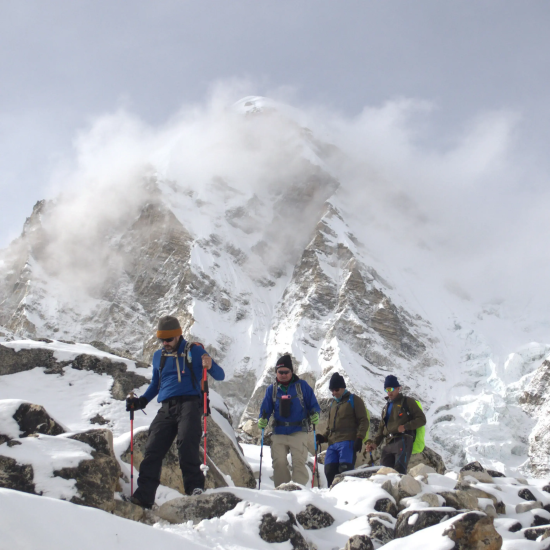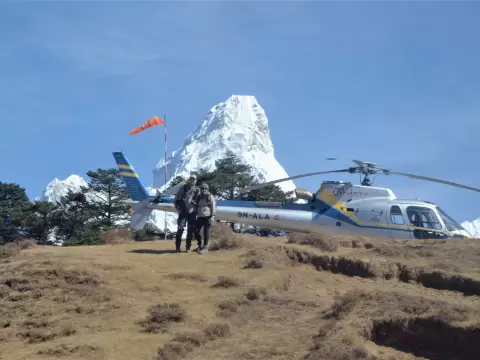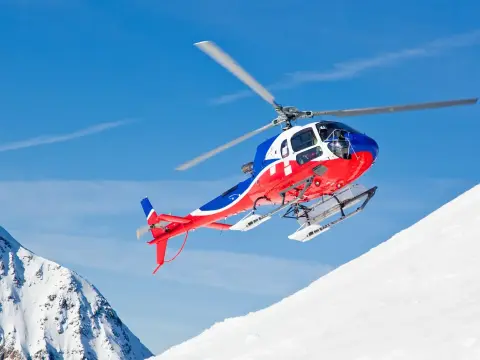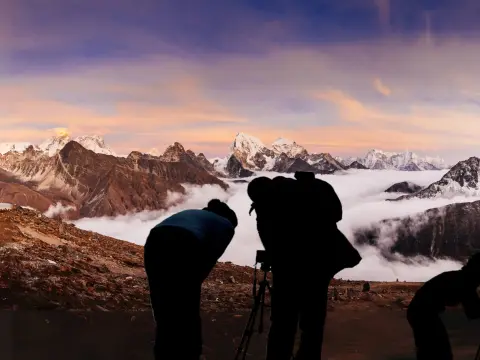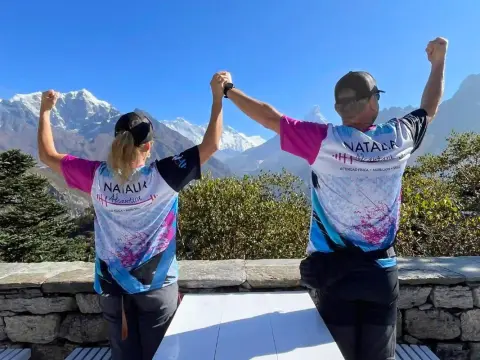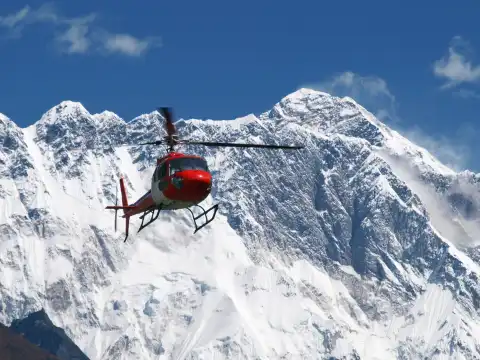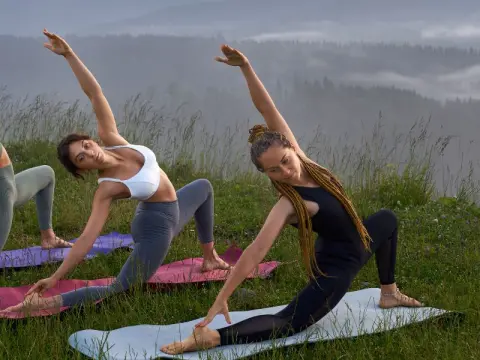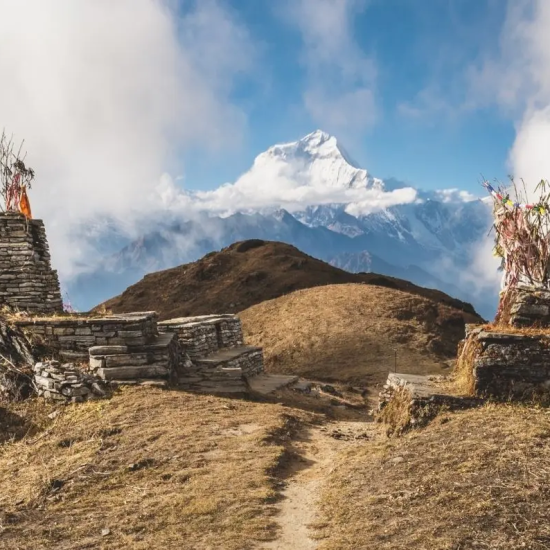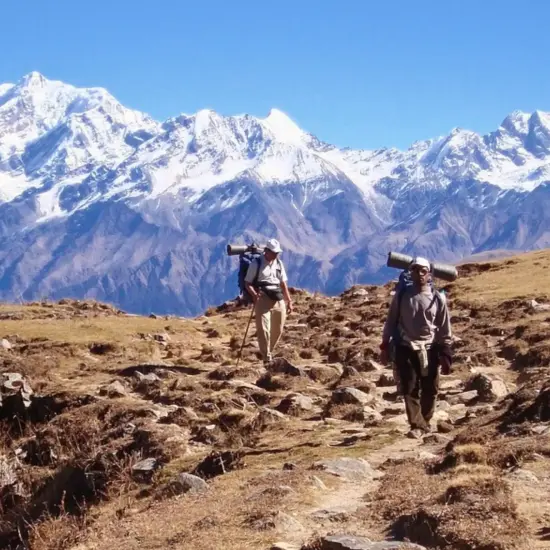Dreaming of reaching Everest Base Camp but not keen on flying into the famously unpredictable Lukla Airport? The Alternative Way to Everest Base Camp Trek is your perfect solution. This off-the-beaten-path adventure takes you along the original route to the base of the world’s highest mountain—without ever needing to board a flight.
Instead of the short but often delayed Lukla flight, this journey begins with an exciting Jeep ride from Kathmandu to Kharikhola via Salleri, giving you a chance to explore more remote corners of the Everest region. This route not only offers a smoother and more reliable start but also lets you walk in the footsteps of early Everest pioneers who trekked this very path before the Lukla airstrip was built.
Route & Altitude Description
The trek begins in Kharikhola (2,120 m / 6,955 ft) and gradually ascends through picturesque villages like Paiya, Phakding, and Namche Bazaar—the bustling Sherpa hub of the Khumbu region. As you climb higher, you'll cross the famed suspension bridges of the Dudh Koshi River, pass through rhododendron forests, and eventually reach the icy heights of Everest Base Camp (5,364 m / 17,598 ft) and Kala Patthar (5,545 m / 18,192 ft), the best vantage point for panoramic views of Everest and neighboring peaks.
The return follows the same trail back to Kharikhola, where a shared or private Jeep awaits to bring you back to Kathmandu.
Everest Base Camp Trek Map
While this alternative route follows a longer path compared to the classic fly-in version, it's equally rich in natural beauty and cultural experience. A detailed Everest Base Camp trek map will show your journey from Kharikhola to Everest Base Camp and back, with major highlights like Namche Bazaar, Tengboche Monastery, Dingboche, Lobuche, Gorakshep, and Kala Patthar.
Historical and Cultural Significance
This route is historically significant—it was the original path to Everest used by Sir Edmund Hillary and Tenzing Norgay in the 1950s. You'll pass through traditional Sherpa villages, visit centuries-old Buddhist monasteries, and witness vibrant spiritual life fueled by Tibetan culture. The Tengboche Monastery in particular is a serene and sacred highlight, offering blessings to all who pass.
Himalayan Views
From the moment you leave the lower hills to your arrival at the high-altitude Himalayan amphitheater, you’ll be surrounded by snow-capped giants. Expect jaw-dropping views of Mt. Everest (8,848 m / 29,029 ft), Lhotse, Nuptse, Ama Dablam, Thamserku, and many more. Sunrise from Kala Patthar is truly unforgettable—a 360° panorama of Himalayan glory.
Flora and Fauna
Trekking through varied elevations allows you to witness a rich diversity of Himalayan ecosystems. Lower forests are filled with blooming rhododendrons, oak, and pine, while higher regions are dotted with juniper shrubs and alpine mosses. Keep your eyes open for Himalayan monals, musk deer, blue sheep, and, if you’re lucky, even snow leopards in remote stretches of Sagarmatha National Park.
Permits and Permissions
To do this trek legally and responsibly, you’ll need the following:
- Sagarmatha National Park Entry Permit
- Khumbu Pasang Lhamu Rural Municipality Entry Permit
Your guide or agency will take care of all permits and necessary permissions
Who Can Do This Trek?
This trek is ideal for adventurous trekkers who are moderately to highly fit and wish to avoid flying to Lukla. It’s perfect if you have a bit more time and want a deeper, less-touristy Everest experience. The longer walking days at the start allow better acclimatization, reducing your chances of altitude sickness. Beginners with strong physical preparation and determination can also attempt it with a good guide and porter.
Alternative to Flying to Lukla
One of the biggest advantages of this trek is that it completely eliminates the need to fly to or from Lukla, avoiding common delays or cancellations due to bad weather. Instead, you’ll enjoy a scenic drive to Kharikhola, soaking in countryside views, mountain foothills, and traditional villages along the way. It’s a safer, often more affordable, and more flexible option for those with the time and curiosity to take the road less traveled.
Final Thoughts
Skip the Lukla flight and take the scenic, original route to Everest Base Camp. This off-the-beaten-path trek offers stunning Himalayan views, rich Sherpa culture, and a safer, more gradual ascent.
Trek with Places Nepal and discover a side of Everest most travelers miss.
📞 Contact us now to join a group, book a private trek, or customize your itinerary.




























































